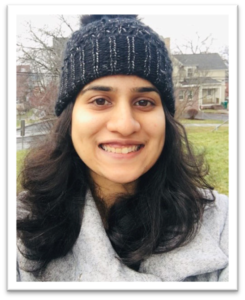CSB Spotlight: Areetha D’Souza, Chazin Lab

Areetha D’Souza is a research instructor in the Department of Biochemistry and the Chazin Lab.
With a diverse scientific background centering on NMR and cryo-EM, she still has time for the finer things in life—especially tacos! Meet Areetha …
What is the focus of your research?
I’m currently studying nucleotide excision repair (NER). NER is an essential DNA repair pathway responsible for the removal of bulky DNA lesions and it functions through the concerted assembly and action of more than 20 proteins at the site of damage. Mutations in NER genes are associated with inherited diseases characterized by cancer predisposition, neurological abnormalities and premature aging and NER also processes DNA adducts formed by commonly used anticancer agents, including cisplatin. My project focuses on how the multi-protein NER machinery finds and processes damaged DNA.
What tools/techniques do you use?
My background is in NMR Spectroscopy, but when I started working on NER complexes, which are comparatively large and flexible protein complexes, I transitioned to cryo-EM. I also use a variety of structural, computational and biophysical techniques to characterize protein-protein interactions.
What was your path to this position?
My research experience spans across biochemistry and structural biology of proteins, peptides and interactions with ligands. My graduate studies and first postdoctoral work were focused on the design of peptides and proteins and using NMR characterizing the 3D structures and functions of proteins and peptides. I joined the Chazin lab in Vanderbilt as my second postdoc and used the fragment-based drug discovery approach to develop inhibitors of protein XPA in the NER pathway. The diverse projects in my career have provided me with a unique, multidisciplinary background to take on scientific challenges.
What is your favorite part of performing research within a lab?
I love being able to do cool science experiments every day, while also being able to design research projects and mentor students and postdocs.
What do you think is the key to a cohesive lab environment?
A cohesive lab environment must have effective communication and collaboration. I took a one-year sabbatical from 2023–2024 in my collaborators laboratory in the Institute of Basic Sciences-Korea, where I got the opportunity with Dr. Hyun Suk Kim, a senior scientist with a completely different scientific background from me. We joined forces to work on an interesting and challenging project together. This was a unique and great opportunity for me to learn new skills and look at my project from a non-structural biology perspective.
What are some fun activities you like to do outside the lab?
Outside of the lab, I spend most of my time hitting group fitness classes or visiting cafes and new restaurants in Nashville. I love tacos, traveling, baking bread and watching sunsets.

Leave a Response
You must be logged in to post a comment